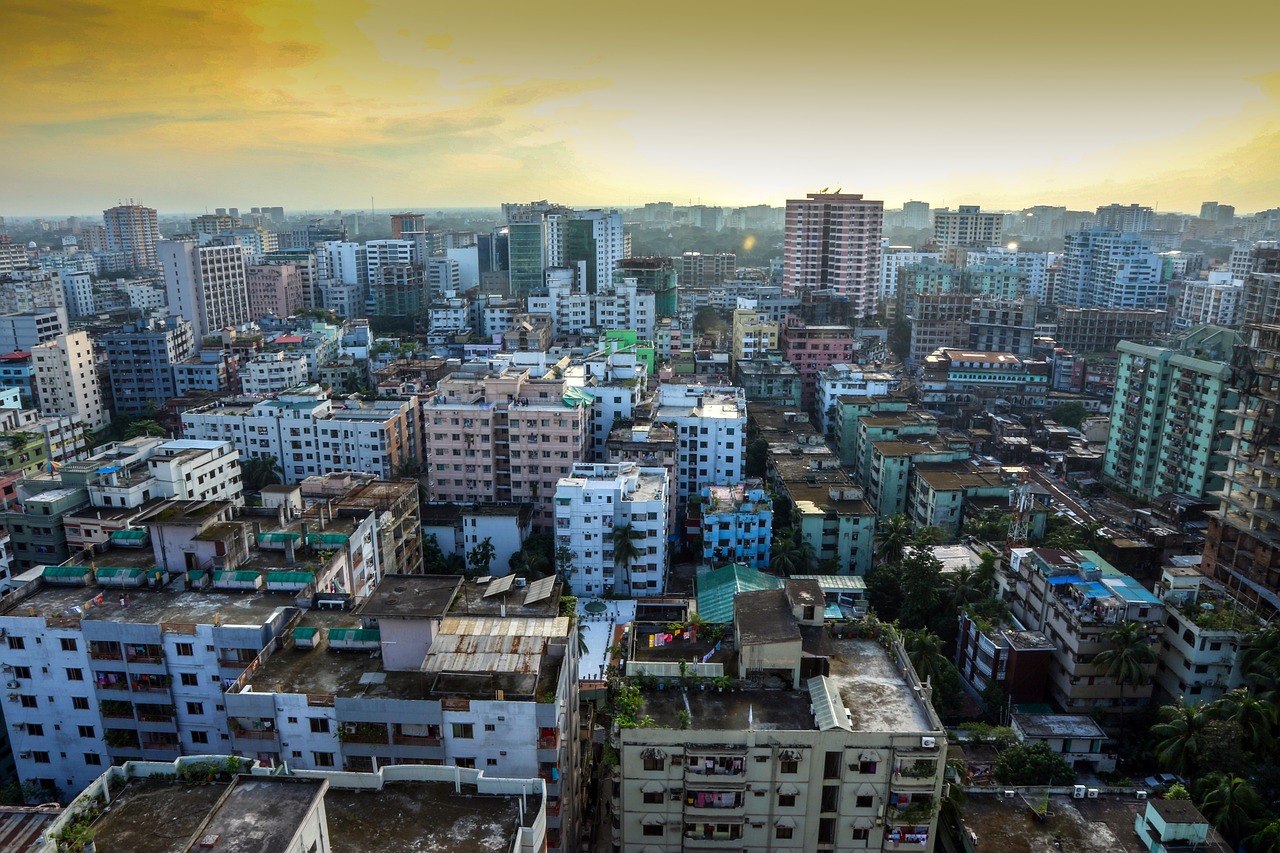
DHAKA (Thomson Reuters Foundation) – In the factory where Aysha Talukder Tanisa stitches jeans and children’s clothes for Western brands, the cooling system has been no match for Bangladesh’s longest heatwave in 70 years.
“Some of us – mostly girls – fall sick, vomiting or swooning due to the boiling heat,” the 22-year-old told the Thomson Reuters Foundation by phone from Ashulia, a town near the capital, Dhaka.
Temperatures soared to more than 40 degrees Celsius (104 Fahrenheit) in late April, taking a particularly heavy toll on factory workers including most of Bangladesh’s four million garment industry employees, 60% of whom are women.
Around the world, more than two-thirds of workers have been exposed to excessive heat while doing their jobs, a U.N. report said in April.
Bangladesh loses $6 billion a year in labour productivity due to the effects of extreme heat, according to a study published by the Adrienne Arsht-Rockefeller Foundation Resilience Center.
As climate change fuels the frequency and intensity of heatwaves, leaders of the country’s crucial garment industry are scrambling to implement measures to protect workers.
“Heat poses a serious business risk for the apparel industry,” said Manirul Islam, deputy director at Bangladesh Institute of Labour Studies (BILS).
Islam, who surveyed more than 400 garment workers, said one in five workers had to go on sick leave at least once during the hottest months due to the effects of heat, and 32% said their working abilities sank due to the sweltering conditions.
Some leading clothing manufacturers are taking steps to keep workers safe, but labour rights activists say protecting workers’ health and productivity requires more money and commitment from suppliers, brands, and the government.
The DBL Group, which employs about 35,000 workers and supplies some of the world’s biggest clothing retailers, has been ensuring employees have drinking water on hand and oral hydration salts, said Mohammed Zahidullah, chief sustainability officer at the family-owned conglomerate.
Water sprinklers are being used to cool the roofs of factories that get particularly hot during the summer, he added.
Team Group, another leading clothing supplier in Bangladesh that employs about 23,000 people, uses exhaust fans to keep indoor temperatures 4-5 C (7.2 F-9 F) cooler than outside, said Md. Monower Hossain, head of sustainability at the group.
“We also use double-glazed glass at one side of the factories which allows in sunlight but wards off the heat – keeping the inside cool and well-lit,” he added.
In factory compounds, the company is trying nature-based cooling solutions, such as planting trees and installing water features such as ponds and fountains.
SWELTERING COMMUTES, CROWDED HOMES
But keeping factories cool does not protect workers during their commutes, or at home, where many live in tiny, crowded houses with shared kitchen and bathroom facilities, said Guy Stuart, executive director of the Global Worker Dialogue (GWD) who runs regular surveys into workers’ conditions.
The minimum monthly wage for a seamstress in Bangladesh is about 13,300 taka ($113), putting costly air conditioning and generators out of reach.
Yousuf Bin Ibrahim, a garment worker in his early 30s from the central city of Narayanganj, said frequent power cuts render useless the electric fans he bought for his rented flat.
“(It) gets too hot to bear for me and my kids in the summer days,” he said, adding that it was often more comfortable at work.
Nearly 19,000 people die every year due to workplace injuries attributed to excessive heat, and an estimated 26.2 million people are living with chronic kidney diseases linked to workplace heat stress, according to last month’s report by the U.N.’s International Labour Organization (ILO).
As climate change increases the risk of extreme heat, Zahidullah said manufacturers will need to make big changes to existing factories and climate-proof newly built premises.
“Going forward, we should consider a scenario when summer heatwaves will climb to, say, 45 C (113 F),” he said.
As head of operations at energy technology firm Grit Technologies Limited, Sudip Paul has spent years helping factories address climate-related challenges. He said simple, inexpensive steps can make a difference.
They could include starting shifts at 6 a.m. rather than 8 a.m., so workers can go for lunch before the midday heat peaks, providing them light cotton clothing and white parasols for the walk home, besides proper maintenance of cooling fans, Paul said.
Such measures are welcome, but the government and investors must do more to tackle the threat of rising heat, said Zahangir Alam, who has worked for three decades with top global brands – including H&M, Walmart and Denmark’s Bestseller – on labour issues and sustainability.
Bangladesh needs to put in place a clear legal standard on what temperature is permitted inside factories, rather than simply saying it should be “within tolerable limits” as it does at present, Alam said.
“The government should up its game and set down a national strategy to deal with the heat risk in industry – while brands should step up to financially support actions to protect workers,” he added. – Reuters



